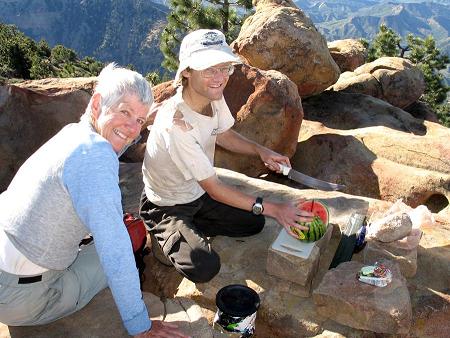
atop Reyes Peak. Refreshing!
Richard Carey photograph (click for enlargement).
| Easting, Northing, elevation (feet) | Topographic chart | Description |
| **************************** | *************** | ********** |
| (348610 E, 3842219 N, 5774) | click here | eastern summit (300 feet north of road - DPS "summit" register) |
| (348173 E, 3842554 N, 5772) | click here | middle summit (immediately south of road) |
| (347640 E, 3842671 N, 5783) | click here | western summit (eastern sub-summit 500 feet east) |

|
|
Gail Hanna and Adam cut the juicy, little watermelon atop Reyes Peak. Refreshing! Richard Carey photograph (click for enlargement). |